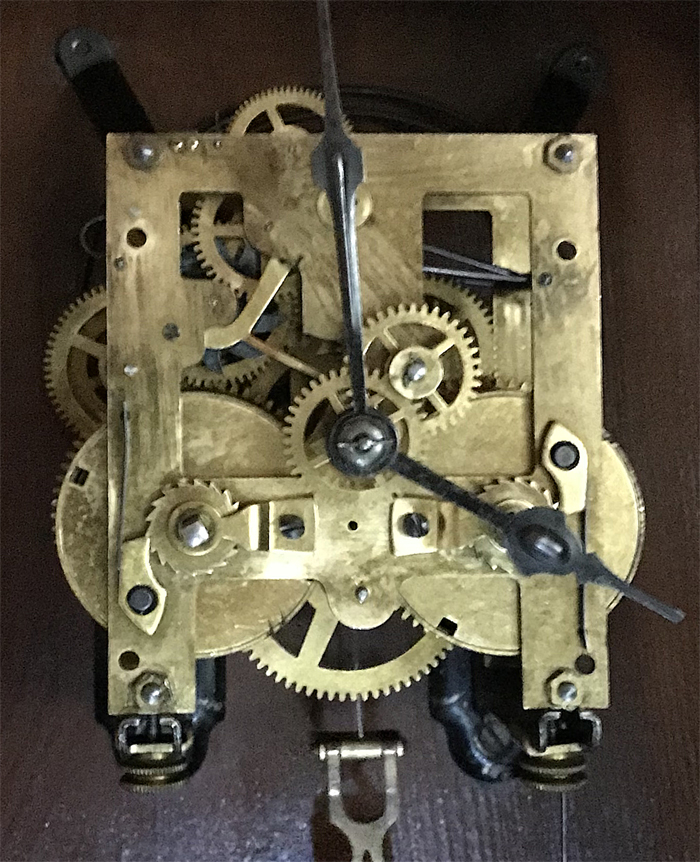精工舎
Seikosha
精工舎 1892(明治25年)~ 日本・東京 現在の「SEIKO」 Tokyo・ Japan Present “SEIKO”
この柱時計は、大正時代につくられたものです。
総 欅(ケヤキ)づくりで、木目を生かした約70cmの少々大きめの時計です。がっしりしたつくりで見栄えがします。頭部と上部両サイドに金属製の装飾がされています。ヨーロッパ型のスリーゲルタイプです。文字盤は、直径約18cmの金属製文字盤です。前面は、約5mmの一枚ガラスでその側面は全てベベルカットされ、高級感を出しています。また、本体上部両側面には小窓が付いていて、機械の動きを見て楽しむことができます。「歴史」のページでも触れていますが、精工舎の創設者である服部金太郎のポリシーである、「精工・高級・外国製品に匹敵する時計づくり」が、この時計にも生きているように思います。
精度は非常に正確で、現在でも日常生活で十分使用できます。(「歴史」のページ参照 )
This clock was made in the Taisho Period (1912~1926), that is a little longer ( about 70 cm long ).
The case is robust made of zelkova, taking advantage of its grain. It has finished well. There are decorations made of copper on the top, and the both sides of the steel clock face.
This is an European type called “Sliegel”. The front door has a piece of 5 mm thick glass that is beveled three sides, and brings about luxury looking. And there are small windows on both sides to enjoy the machine moving.
As explained in the “History” page, Hattori Kintaro who established “Seikosha” had the strict policy of making clocks “Preciseness・Sense of luxury・Comparable to foreign made”. This clock seems to be felt his policy in it. As he aimed at, this clock is very precise and can be used practically enough still now. ( Refer to “History” Page )
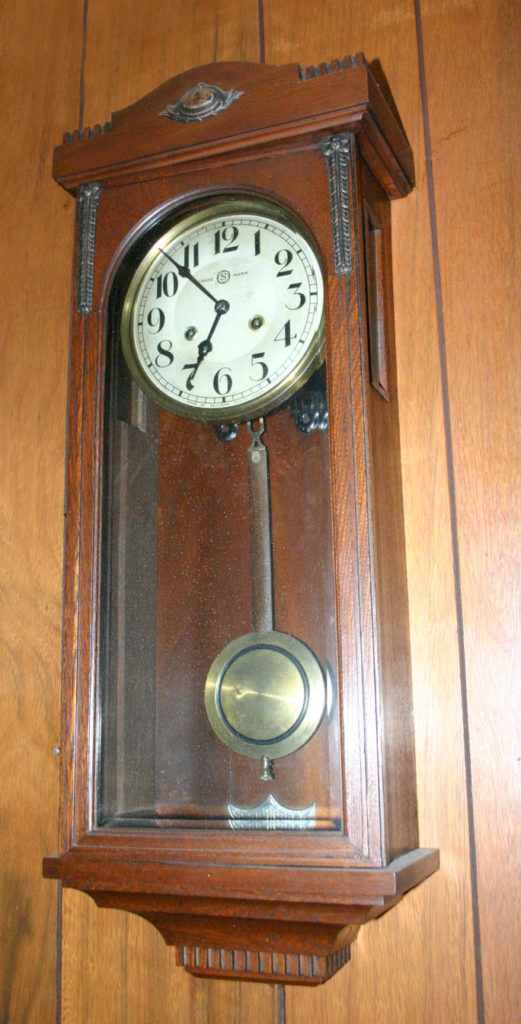
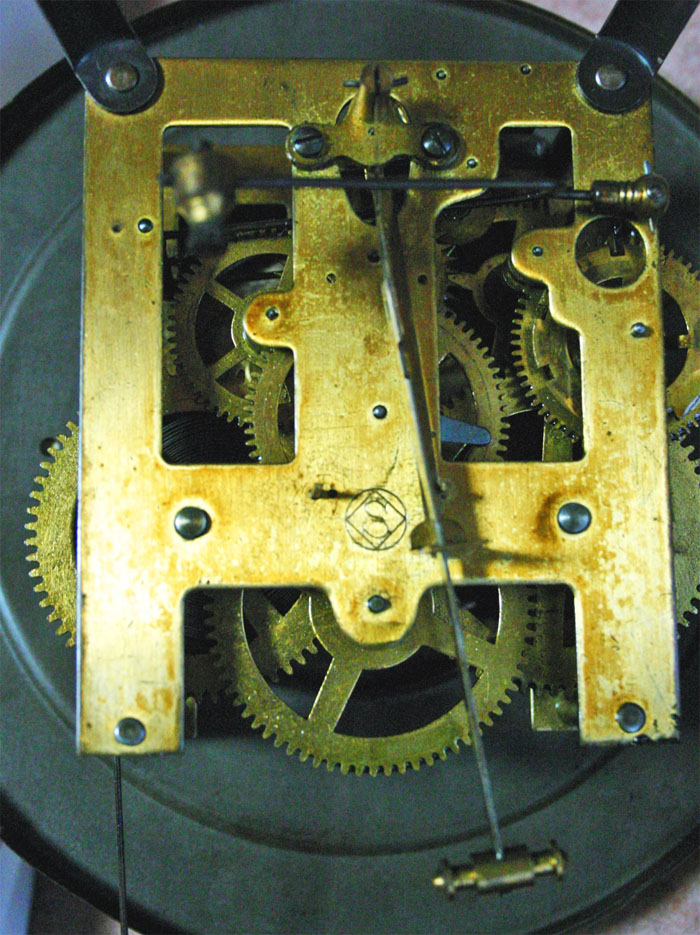
機械部分は、基本的にはキンツレー、ユンハンスなどと同じヨーロッパタイプの機構です。横から見た写真のように、シャフト類は非常に細く、スプリングは「香箱」入りです。
(キンツレーのページ参照)
The machine is basically the same as Kienzle, Junghans and so on, European type. As the side view, the shafts are very thin and the springs are housed in “the barrels”.
(Refer to Kienzle Page)
The trade mark of Seth Thomas
The trade mark of Seikosha

服部金太郎が、セス・トーマスを意識していたことは想像できる。
(セス・トーマスのページ参照)
It is easily understand that Hattori Kintaro the founder of Seikosha was conscious of Seth Thomas.
(Refer to the page Seth Thomas)
(左)横から見た機械。細いシャフトが見 られます。
(left)The side view of the machine. very thin shafts can be seen.
(右)機械に刻印されたトレードマーク
(right)The trade mark stamped on the machine


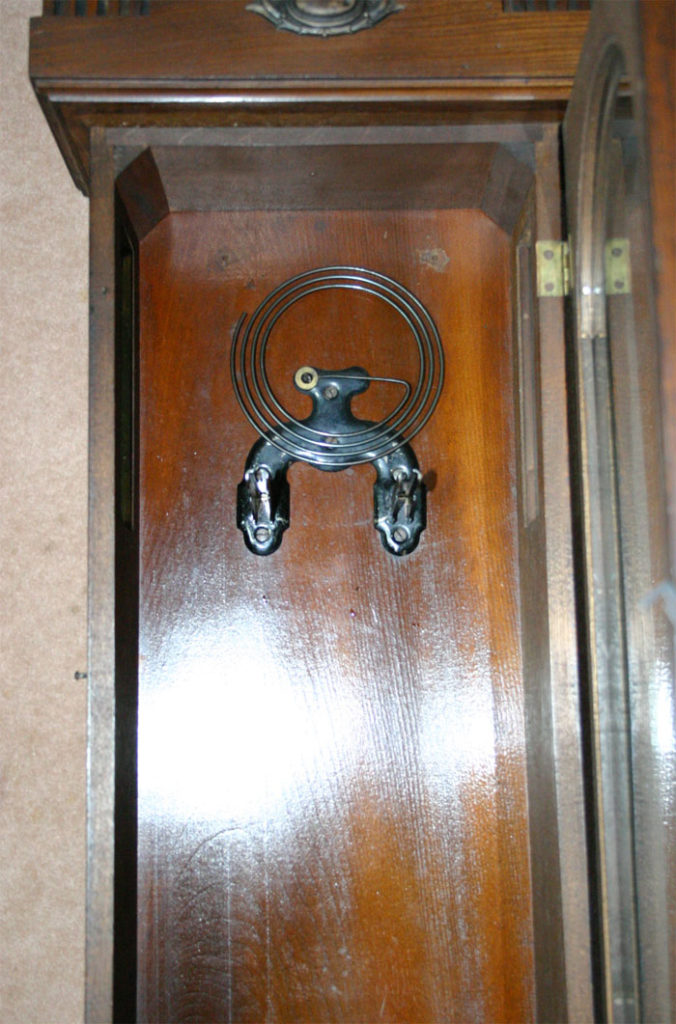
大きなケースに太いウズボン、少し低めのゴング音は離れた所からでもよく聞こえます。
ヴァイブレーションの美しい響きは、遠い懐かしい光景を思い出させます。
The sounds of the gong ( a little lower and bigger ) can be heard well from the distance, because of its larger case and the thick gong spring.
The good vibrating sound reminds me of the past nostalgic views.
オーバーホールを完成しました。 Overhaul has been finished.
分解 Disassembly
清掃 Cleaning
20年ほど前に手に入れたのですが、一度もオーバーホールをしていませんでした。まだ正確に動きますが、機械部分には古くなった油の塊が見られるので、オーバーホールをすることにしました。特に、香箱入りのスプリングを清掃したいと思っていました。
本機は、ユンハンスなどのヨーロッパ式機構です。
Although I got this clock about 20 years ago, but I’ve never overhauled this one. This machine moves well, but oil clots can be seen on the gear wheels. So I tried to overhaul this machine. Especially, I wanted to clean the spring in the barrel.
The machine is an European type like Junghans’s.
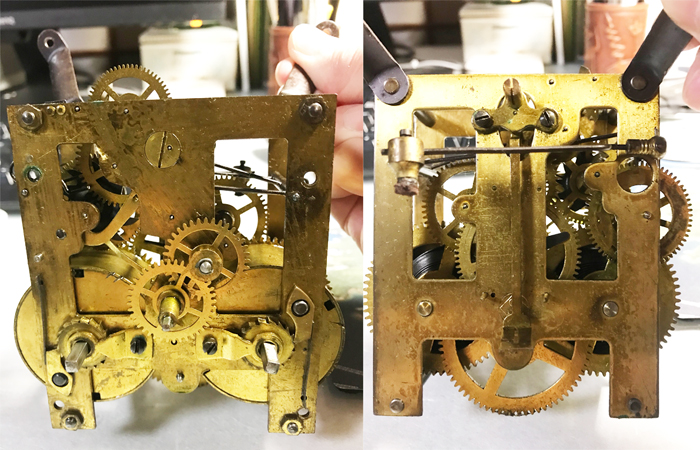
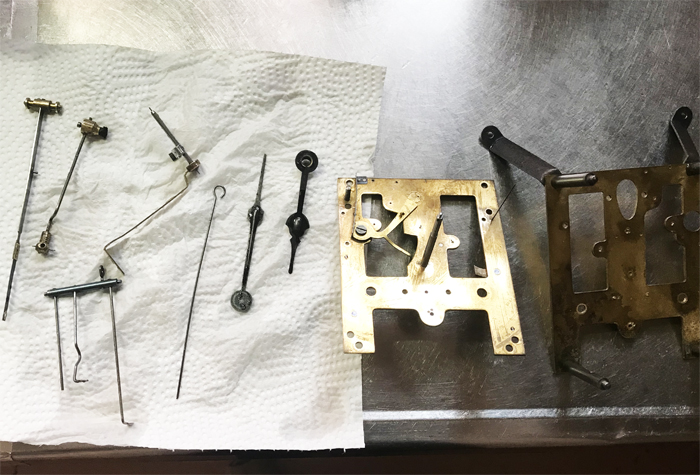
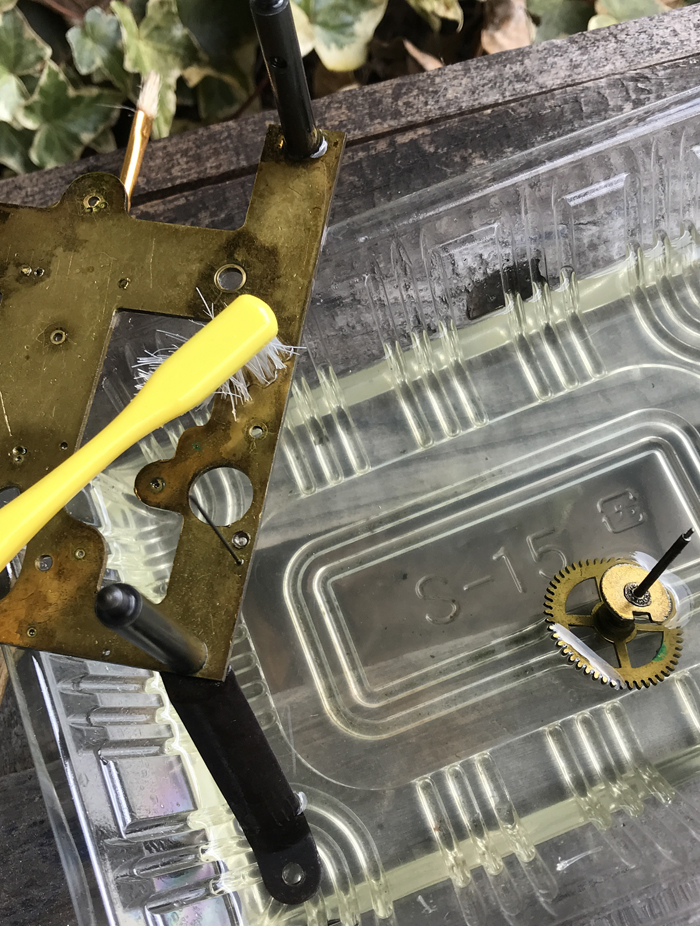
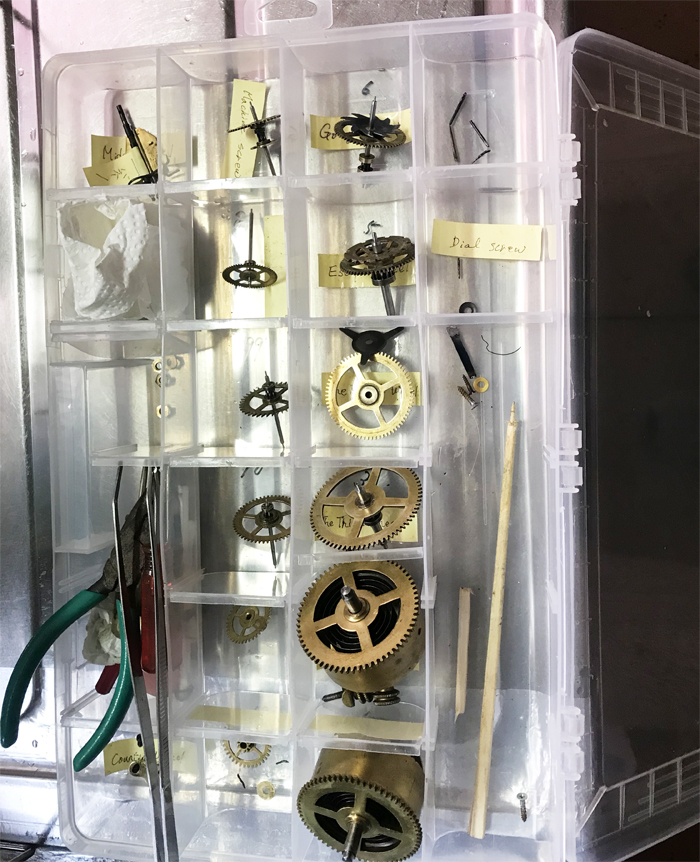
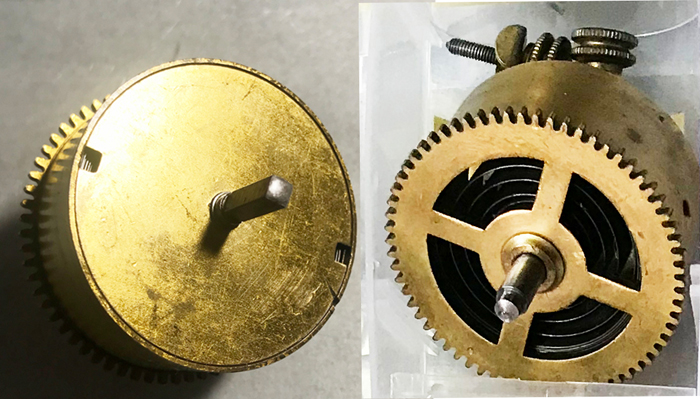
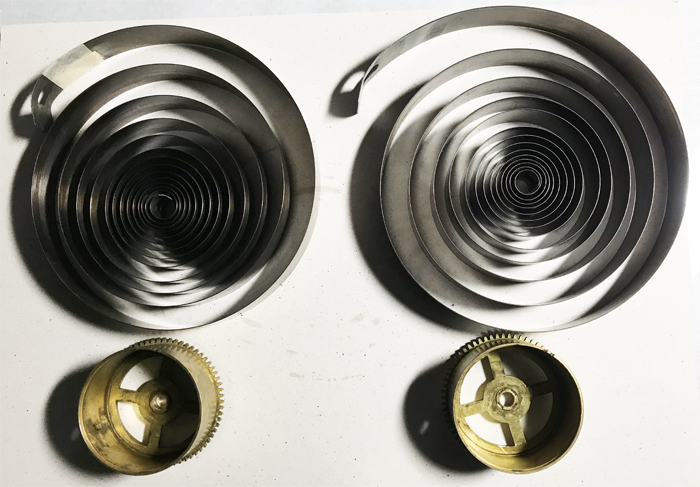
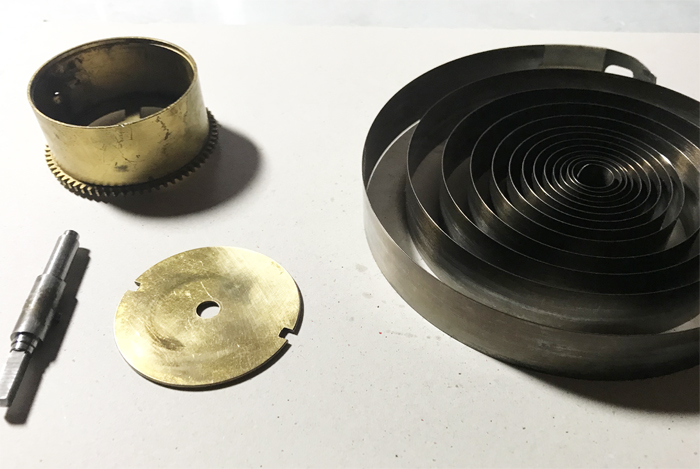
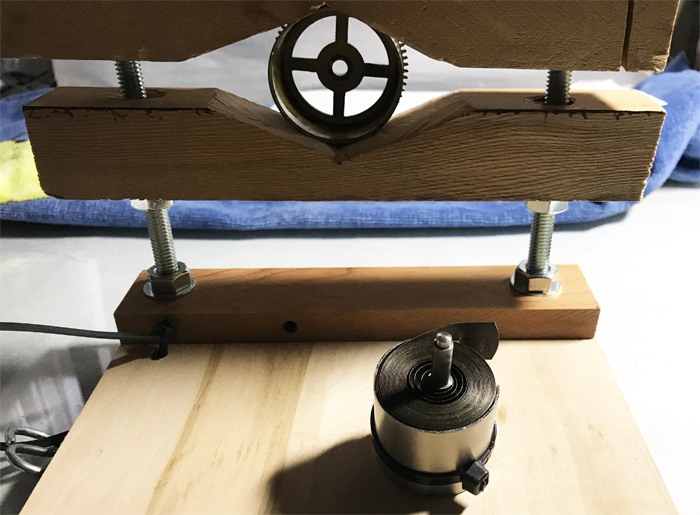
取り外しと取り付け
(香箱からのスプリングの取り出しと収納)
Removing and Installing
(taking the spring out of the barrel and putting it back)
香箱からスプリングを取り出して清掃し、また収納するには多少の道具が必要ですが、持っていなかったために、身近にあるもので俄か作りをしました。(右下写真)
A tool is needed to take out the spring from the barrel and clean it, and to put it back into the barrel.
As I don’t have the tool, I made it simply myself with the materials around me. (photo bottom right)
繊細さ Delicacy
明治時代のドロップオクタゴン時計と比較すると、かなり繊細なつくりになっています。一番違ったのは、歯車のシャフトの細さです。
機構も合理的になっています。
To compare with general drop octagons in Meiji era, the machine of this clock is quite different in delicacy.
What is the most different is the thinness of the shafts.
The movement of the mechanism has become to be more reasonable.
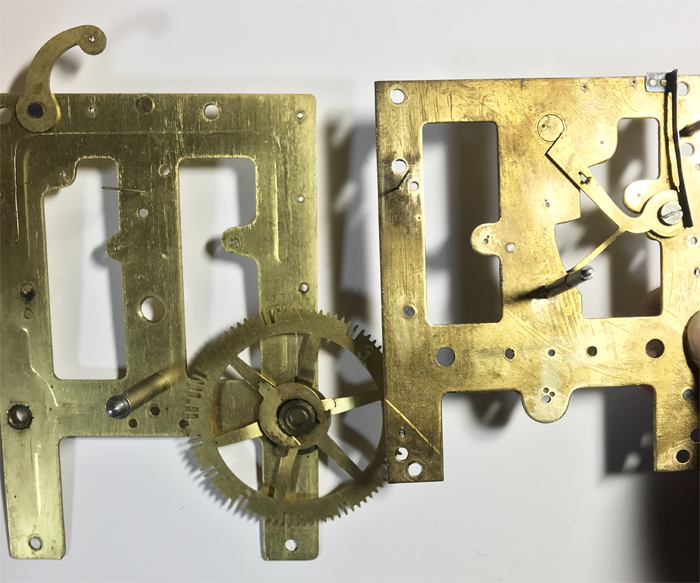
左は一般的なプレートで、右は本機のプレート。
The left is a general plate, and the right is this machine’s.
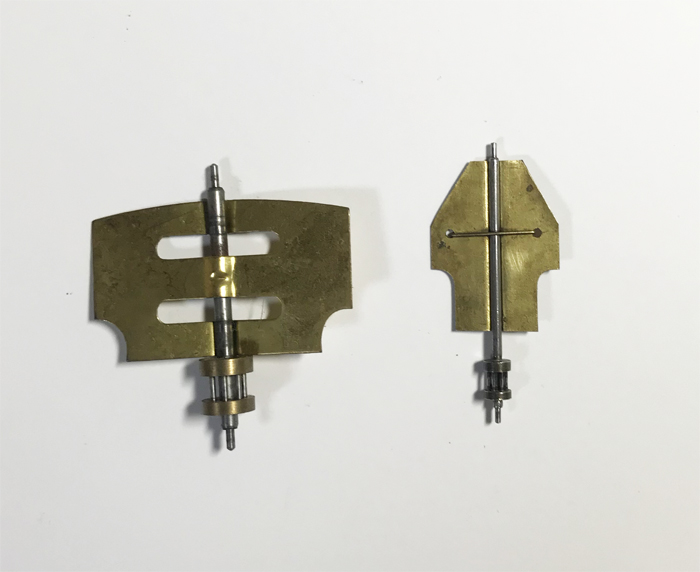
左は一般的な風切りで、右は本機の。
The left is a general fly, and the right is this machine’s.

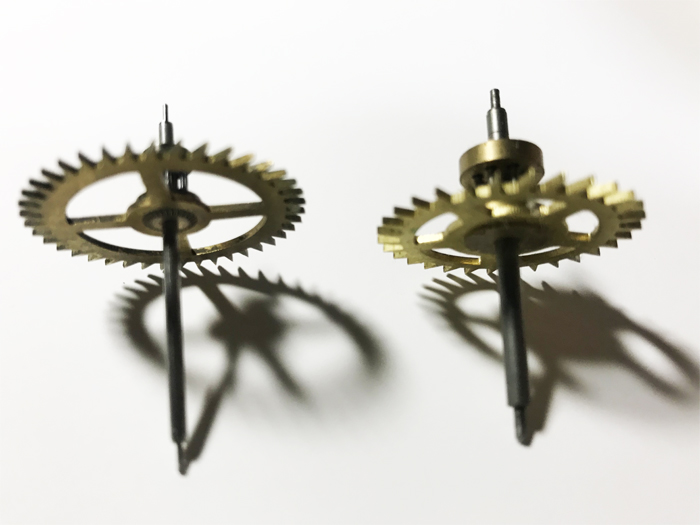
左は本機のガンギ車で、右は一般的なもの。
The left is the escape wheel of this machine, and the right is general.

完成 >
Completed >
完成まぢか Nearing completion
あと一息で完成です。
シャフトが細い分、両ほぞ穴にシャフトを入れるのが大変でした。
One more breath to complete.
Since the shafts are thin, it was hard to insert the shafts into the mortises of both plates at the same time.
